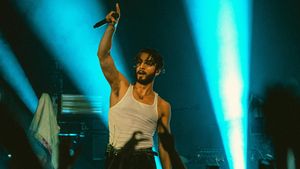To issue public safety alerts, local and national governments often rely on SMS alerts. But in areas with lagging connection, communities are often left behind.
According to broadband consulting firm CostQuest, 25 million homes and small businesses across the United States have unreliable service. Others say that the number could be much higher, as it is difficult to exactly how many people are impacted.
The problem usually affects rural and tribal communities without adequate access to cell towers. Though in densely populated areas — usually low income neighborhoods — the greater demand for service mixed with poor infrastructure also prevents emergency alerts from going out.
“This is a widespread issue across the U.S.,” said Rob Dale, a public alert and warning expert in Michigan told The Washington Post. “These areas, where cellphone coverage isn’t there or reliable, tend to be left out of our easiest, most reliable alert system. Emergency managers have no way of enhancing what is not there.”
Access to emergency information can be the difference between life and death in natural disasters. Survivors of California wildfires have reported not receiving SMS alerts — despite signing up for them — even when their homes were in the direct path of the fire.
Ample research found that lackluster government system of communication are also to blame for inadequate warnings, writing that "lack of collaboration is the chief culprit in major failures in disaster response and takes the form of a lack of available crisis information or poorly managed information flow."
A possible solution to lack of service that would not require updated infrastructure are Wireless Emergency Alerts (WEAs), which government officials can send to devices in a designated area even when service is out, similar to how mobile phones are able to call 911 emergency services without reception.
“WEA is the easiest, most reliable system we have,” Dale added. “People don’t have to sign up for it, you don’t need an app. Even with issues, we can still get 90 percent of phones, and there’s nothing else that gets that kind of reliability for us.”
Using WEAs requires certification, but all local officials or law enforcement have to do is submit an application then complete training. Unfortunately, many are not aware the option is available.
This was demonstrated in Louisiana just last week, after devastating tornadoes injured at least five people, overturned homes, and even tore the roof off of a local hospital. While residents in New Iberia received alerts, Governor John Bel Edwards said that those a few hours away in Caddo Parish did not.
He said at a press conference: “Unfortunately, it was in a rural area where cellphone coverage is so poor that warning wasn’t available for people yesterday. And it may or may not have made a difference. The point I’m trying to make is: Cellphones are not just a matter of convenience for communications, they’re actually public safety instruments, as well.”



















































